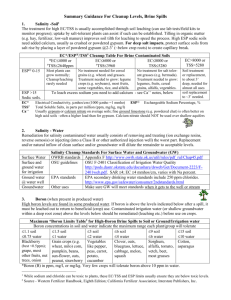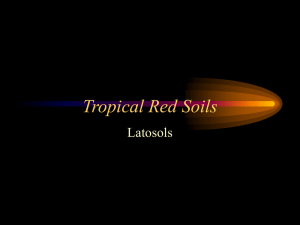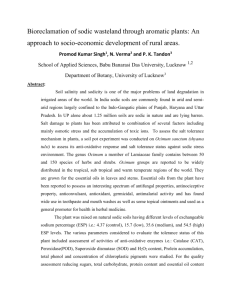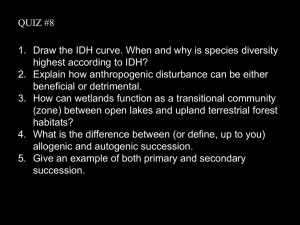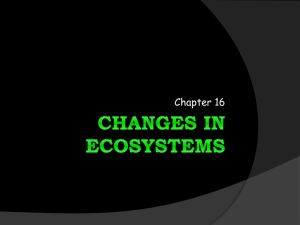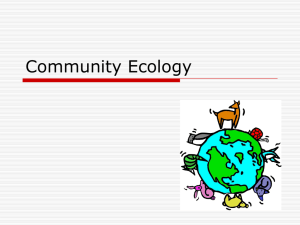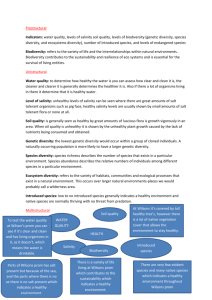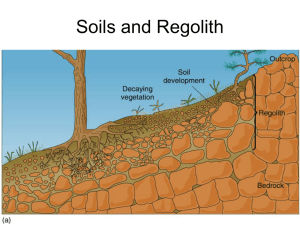Soil management Tony Pitt
advertisement
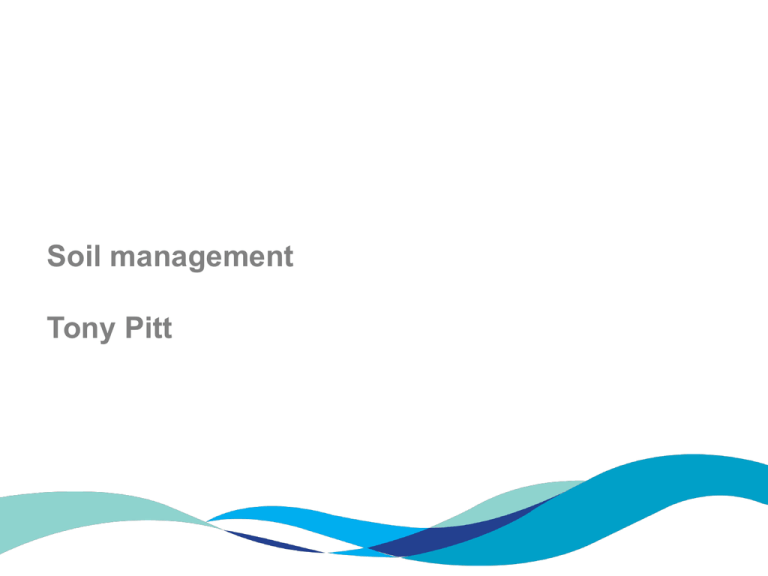
Soil management Tony Pitt Six years of soil testing • In 2005/06, recycled water use was fairly minor – just 47 farms with more than 1 ML/ha. • For 2006/07, recycled water underpinned crop production for Werribee • For the following 4 years, recycled water was by far the dominant source of irrigation water for the district. • The salinity of the recycled water is 1700 to 2300 EC – 1,700 uS/cm to 2,300 uS/cm – units used for irrigation water – 1.7 dS/m to 2.3 dS/m – units used for soil water. Average Soil Salinity 8 7 ECe dS/m 6 5 4 3 2 1 0 Baseline 2006 2007 Soil Ece 2008 2009 REIP Threshold 2010 Average Soil Chloride 900 Concentration mg/kg 800 700 600 500 400 300 200 100 0 Baseline 2006 Chloride 2007 2008 2009 REIP Threshold 2010 Average Exchangeable Sodium Percentage (ESP) 20 18 16 ESP % 14 12 10 8 6 4 2 0 Baseline 2006 ESP 2007 2008 REIP Threshold 2009 Sodic 2010 In 2010 • Average surface soil salinity is back to baseline values • District average chloride has fallen by 40 % in 12 months • Sodium values however are unchanged • Sodicity is apparent when collecting soil samples • Winter rainfall better but still below average Short term • The Red Brown Earth soils of Werribee South are very forgiving and very responsive to rain • The late summer and autumn period are the most important times for salinity management • For every irrigated crop some leaching is required • A negative impact of rainfall on sodic soils is the dispersion and sealing of the soil surface Long term • Natural leaching from rain will remove the surface salinity provided the soils are kept permeable • Rain or low salinity water doesn’t improve sodicity • Sodicity requires continuous on-farm management • Gypsum dosing of the irrigation water could be better option than broadcast gypsum Sodicity management • Adding calcium – Gypsum broadcast – Gypsum added to water – Other calcium fertilizers In summary • Werribee South soils can handle 2,000 to 2,200 EC water for a season or two with very good farm management • Evidence from six years of soil testing indicates 1,300 EC –1,800 EC, with minimal leaching should be sustainable provided soil sodicity is kept under control • Above 1,800 EC leaching has to increase and be planned for each crop • Lower salinity water may increase the problems of surface sealing and poor aeration • On-going sodicity management important
